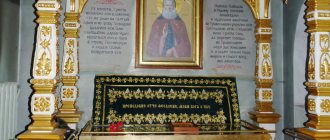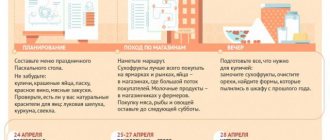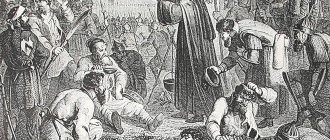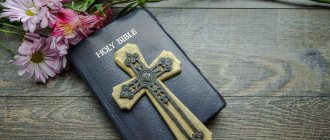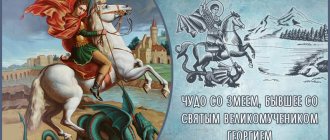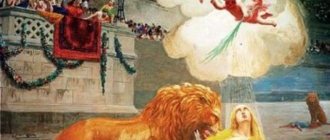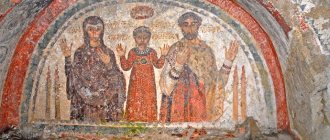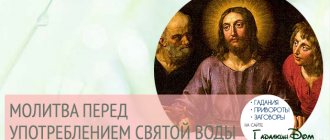Miracles of Jesus
“Thus Jesus began miracles in Cana of Galilee and revealed His glory; and His disciples believed in Him."
In. 2:11.
“Jesus performed this second miracle when he returned from Judea to Galilee.”
In. 4:54.
This message is based on two main questions:
1. Why are miracles counted in the Gospel of John?
2. Why is this account in the Gospel of John and not in the other Gospels?
Answering the second question, we can say that, as we already know, the Gospel of John, whose image is an eagle flying on high , is a message especially for the church
. The eagle is characterized by very high visual acuity.
The answer to the first question appears to be that the above passages of Scripture stimulate the account of further miracles in this Gospel .
Therefore, through them, we can
find the path that the Lord wishes for us for our lives .
1 – Marriage in Cana of Galilee – Salvation
“On the third day there was a marriage in Cana of Galilee, and the Mother of Jesus was there. Jesus and His disciples were also invited to a wedding. And because there was a shortage of wine, the Mother of Jesus said to Him: They have no wine. Jesus says to Her: What do I and You have, Woman? My hour has not yet come. His mother said to the servants: whatever He tells you, do it. There were six stone waterpots here, standing according to the custom of Jewish purification, containing two or three measures. Jesus says to them: Fill the vessels with water. And they filled them to the top. And he says to them: Now draw some and bring it to the master of the feast. And they carried it. When the steward tasted the water that had become wine - and he did not know where this wine came from, only the servants who drew the water knew - then the steward calls the groom and says to him: every person first serves good wine, and when they get drunk, then the worst; and you have saved good wine until now. Thus Jesus began miracles in Cana of Galilee and revealed His glory; and His disciples believed in Him” John. 2:1-11
.
This was the first miracle of Jesus in His ministry. Why did this miracle happen at the wedding?
a)
Marriage – New Life
Theoretically, in marriage, a person becomes responsible when he leaves the parental home to start a new family. The bride and groom naturally have their own plans for life, and they also, following the example of everyone else, organize a wedding feast.
An image of a person’s need for a better life, his plans and dreams.
b) The human project fails – The wine runs out
From the very beginning, Jesus shows that the human project of each of us is untenable. A person will never be ready for all life's adversities .
The more we try and dedicate ourselves, the more we run the risk of losing the joy and meaning of life.
c) Worst wine
There comes a time in a person's life when he takes the worst wine. Agrees to be satisfied only with the limited pleasures of this life. A person takes everything that happens in his life for granted.
A person at this moment no longer has illusions about this life, his taste buds are already accustomed to “bitterness”
which was presented to him every day.
d) The best wine
When it seems that everything has come to an end, Jesus offers a new taste of human life, a joy coming from Eternity, more excellent than anything in this life.
Man realizes that he can revive his project of happiness in the presence of the Lord Jesus .
The outpouring of the Holy Spirit upon us is the best wine .
This miracle of Jesus appears to a person in the Body - at a wedding.
2 – Courtier – Vera
“So Jesus came again to Cana of Galilee, where he turned water into wine.
There was a certain courtier in Capernaum whose son was sick. When he heard that Jesus had come from Judea to Galilee, he came to Him and asked Him to come and heal his son, who was dying. Jesus said to him, “You will not believe unless you see signs and wonders.” The courtier says to Him: Lord! come before my son dies. Jesus says to him: Go, your son is well. He believed the word that Jesus spoke to him and went. His servants met him on the road and said, “Your son is well.” He asked them: at what time did he feel better? They told him: yesterday at seven o'clock the fever left him. From this the father knew that this was the hour at which Jesus said to him, “Your son is well, and he and his whole house believed.” Jesus performed this second miracle when he returned from Judea to Galilee.” Jn.
4:46-54 .
We already realize that even with all our human virtues (nobility), we need the mercy of Jesus.
a)
“Hearing that Jesus had come from Judea to Galilee”
Man begins to understand God's project. He begins to understand the path .
We discover what our position should be,
so that we can receive the blessings of the Lord Jesus.
b) “He came to Him”
It is not enough to just hear the doctrine. We understand that we need to “rise up to Him .
We begin the process of leaving our human essence and accepting the servant essence.
c) “Heal his son, who was about to die”
Our prayers ascend to the Lord only when the Holy Spirit has influence in our lives.
The mission of our enemy is to kill what is born in us,
as a result of our marriage to the Work. When we do not follow the path of change that “lifts” us to the skies, we remain on the brink of death.
d) “He believed the word that Jesus spoke to him.”
Just like in the case of the Roman officer, Jesus did not go with him physically, but Jesus left His word with him: “Go, your son is well.”
.
In a similar way, today a person hears about Jesus and rises to meet Him. Jesus does not go with us physically, but leaves His Word to work. Even without being with us physically, Jesus works through His Word of Life.
At this moment we see that Faith is the basis of everything. Many blessings are lost or delayed because of our lack of faith.
3 – Paralyzed from Bethesda
“After this there was a feast of the Jews, and Jesus came to Jerusalem.
There is also a pool in Jerusalem at the Sheep Gate, called Bethesda in Hebrew, which had five covered passages. In them lay a great multitude of sick, blind, lame, withered, waiting for the movement of the water, for the Angel of the Lord from time to time went into the pool and disturbed the water, and whoever first entered it after the disturbance of the water recovered, no matter what disease he was possessed by. Here was a man who had been ill for thirty-eight years. Jesus, seeing him lying down and learning that he had been lying there for a long time, said to him: Do you want to be healthy? The sick man answered Him: Yes, Lord; but I do not have a person who would lower me into the pool when the water is troubled; when I arrive, another has already descended before me. Jesus says to him: get up, take up your mat and walk. And he immediately became well, and took up his bed and went. Now it happened on the Sabbath day" Jn.
5:1-9 .
The paralyzed man stayed there for a long time, waiting for a miracle. None of the people helped him. But, among all this small crowd, Jesus identified him and gave him everything he needed for the journey.
The ability that the Lord Jesus gives us is so that we can walk in His presence.
This miracle was described immediately after the previous one; no event is described between them. This means that he who believes completes the journey .
“For just as the body without the spirit is dead, so faith without works is dead”
James.
2:26 .
a)
“Get up, take up your bed and walk”
He had to carry his own bed. This suggests that self-indulgence is always with us, but we must fight it ourselves.
"Get up!"
The test amazes us, contributes to our fall, but in this situation the Lord does not act.
Getting up after a fall is difficult and often painful ,
but if we have faith in the Word of Jesus, we will succeed.
"Go!"
It is necessary to leave the place where we were,
because there is nothing else there for our life .
4 – Multiplication of loaves
“After this Jesus went to the other side of the Sea of Galilee, in the vicinity of Tiberias.
Many people followed Him because they saw the miracles He performed on the sick. Jesus went up the mountain and sat there with His disciples. Passover, the Jewish holiday, was approaching. Jesus, lifting up his eyes and seeing that many people were coming towards Him, said to Philip: Where can we buy bread to feed them? He said this, testing him; for He Himself knew what He wanted to do. Philip answered Him: There will not be enough bread for them for two hundred denarii, so that each of them gets at least a little. One of His disciples, Andrew, the brother of Simon Peter, said to Him: here is a boy who has five barley loaves and two fish; but what is this for such a multitude? Jesus said: Command them to lie down. There was a lot of grass in that place. So the people, numbering about five thousand, sat down. Jesus, having taken the loaves and given thanks, distributed to the disciples, and the disciples to those reclining also distributed the fish, as much as anyone wanted. And when they were satisfied, he said to his disciples, “Gather up the remaining pieces so that nothing is lost.” And they gathered and filled twelve baskets with the fragments of the five barley loaves that were left over from those who ate. Then the people who saw the miracle performed by Jesus said: This is truly the Prophet who is about to come into the world. Jesus, having learned that they wanted to come and accidentally take him and make him king, again withdrew to the mountain alone .
6:1-15 .
a ) Exhaustion
Those who follow the path have physical exhaustion, hunger, and the need to restore expended strength. But Jesus has a resource for renewing a person who completes the journey .
b) Few breads
The miracle was accomplished through five loaves of bread and two fish—the boy’s food. What was it for so many. These resources represent the little we do for Jesus.
For example, what does fasting before 9 am mean? But when we put it at Jesus' disposal, He multiplies it. Jesus would not have performed a miracle out of nothing, He needed loaves and fishes - the little things we do.
5 – Walk on the sea
“When evening came, His disciples went down to the sea
and, getting into a boat, went to the other side of the sea, to Capernaum. It was getting dark, and Jesus did not come to them. A strong wind was blowing and the sea was rough. Having sailed about twenty-five or thirty furlongs, they saw Jesus walking on the sea and approaching a boat, and they were afraid. But He said to them: It is I; do not be afraid. They wanted to take Him into the boat; and immediately the boat landed on the shore where they were sailing” Jn.
6:16-21 .
a) By sea
This miracle speaks of those who walk on the sea - they conquer the world without drowning in it .
6 – Remembering the sequence:
- Cana of Galilee
- blessing of the Holy Spirit (Salvation); - Courtier
- faith in His Word; - Paralyzed from Bethesda
- the struggle against self-indulgence; - Multiplying the bread
is giving one’s scarce resources to the Work.
Whoever does this - Conquers the world - Walks on the sea
If you find an error in the text, highlight it and press Ctrl + Enter
Chapter 3. Healings / Healings of a bent woman and a man with dropsy / A man with dropsy
The healing of a man with dropsy is another example of healing on the Sabbath. It does not take place in the synagogue, but in the house where Jesus may have come after the synagogue service:
It happened on Saturday that He came to the house of one of the leaders of the Pharisees to eat bread, and they watched Him. And behold, a man appeared before Him, suffering from water sickness. On this occasion, Jesus asked the lawyers and Pharisees: Is it permissible to heal on the Sabbath? They were silent. And, touching him, he healed him and released him. At this he said to them: If one of you has a donkey or an ox that falls into a well, will he not immediately pull it out on the Sabbath? And they could not answer Him (Luke 14:1-6).
Let us note the similarities between this story and the story of the healing of a man with a withered hand in Matthew's version. There the Pharisees ask Jesus whether it is permissible to heal on the Sabbath, and He answers them with a question in response to the question: Which of you, having one sheep, if it falls into a hole on the Sabbath, will not take it and pull it out? (Matt. 12:10–11). Here we see a slightly different situation: Jesus Himself asks the question about the permissibility of healing on the Sabbath. The answer is healing itself, which is accompanied by the same saying with slight variations. We saw a similar saying in the story of the healing of the bent woman, which indicates that Jesus used the same reasoning and similar images in similar situations.
According to Luke, Jesus repeatedly accepted the Pharisees' invitations to dinner. On one occasion, one of the Pharisees asked Him to eat food with him; and He entered the house of the Pharisee and lay down (Luke 7:36). In another, a Pharisee asked Him to dine with him. He came and lay down (Luke 11:37). Despite the intense conflict between Him and the Pharisees, Jesus did not avoid associating with individuals belonging to this category. At the same time, even while dining in their homes, Jesus did not hesitate to call them hypocrites, fools, hidden tombs and other offensive names, denouncing them for the fact that they purify the outside, while their insides are full of robbery and deceit (Luke 11:39– 44).
Water sickness, or dropsy, was the accumulation of watery fluid in tissues, cavities, and under the skin. In fact, we are not talking about a disease, but about a symptom that appears as a result of various diseases of the internal organs (for example, kidney failure), as a result of which the person’s body swells, he experiences difficulty breathing, and excessive sweating. Water sickness could affect both the whole body and its individual parts (abdomen, chest cavity, arms, legs). According to Josephus, before his death, King Herod experienced severe torment from the illness that befell him, one of the symptoms of which was dropsy: “his legs were filled with a watery, transparent liquid; the same illness befell his lower abdomen.”1 Josephus. Jewish antiquities. 17, 6, 5. P. 734..
Jesus heals the sick by more than just touching his body. In this case, the participle ἐπιλαβόμενος is used, which can be translated as “hugging” (from ἐπιλαμβάνω - “to take”, “to embrace”, “to embrace”).
When healing the sick, Jesus does not utter any words. He addresses the Pharisees either immediately after performing a miracle, or after the healed person leaves the meeting (the words “at this point” after the word “let go” allow for a double interpretation). The response to His words is silence. They had nothing to answer the question of whether it was permissible to heal on the Sabbath. And to the words about an ox or a donkey falling into a well, they have nothing to object to.
Bent woman
Table of contents
Chapter 4. Casting out demons
